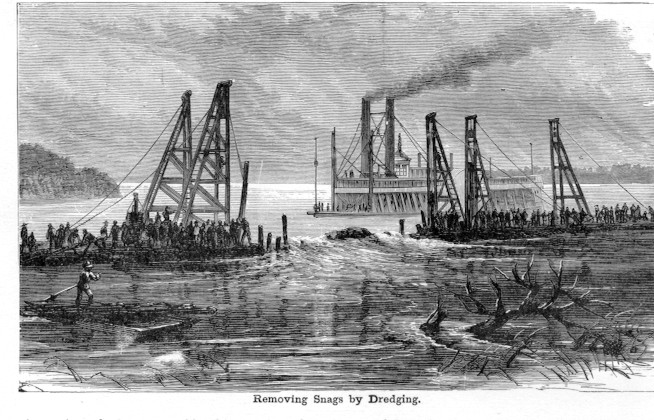Inventing the Riverboat
Today, the present helps us to understand the past. The University of Houston's College of Engineering presents this series about the machines that make our civilization run, and the people whose ingenuity created them.
Historian Louis Hunter looks for Robert Fulton's legacy. We tell children that Fulton invented the steamboat when, in fact, many people built steamboats before him. At the same time, we forget Fulton's contributions to steamboat travel on the Mississippi. Yet there he's overshadowed by Henry Shreve, whose namesake is Shreveport, Louisiana.
Fulton went to New Orleans in 1811 to make steamboats for our central river system. He built them the way people had always built ships -- with deep hulls and keels. He had his share of trouble, but that's the price of being first. His boats would turn huge profits for a few trips, and then break down or suffer accidents. Fulton started the Mississippi riverboat traffic and then died only four years later.
In 1813 a Brownsville, Pennsylvania group began making steamboats on the upstream end of the Mississippi-Ohio-Monongahela system. These were still deep-hulled keelboats, and Shreve was one of their captains. Shreve made the first New Orleans-to-Louisville trip in 1815. He built his first steamboat for the Brownsville group a year later, and he really opened up riverboat trade when he made the first run from New Orleans all the way to Pittsburgh.
The town named Shreveport, by the way, lies far up the Red River -- not the Mississippi. That's because, long after he'd become the major riverboat builder, Shreve took on the job of clearing a vast natural log jam which had, for centuries, plugged a 140-mile stretch of the Red River. And he's honored for doing so.
But Henry Shreve built his name by following Fulton into the steamboat business and picking up where Fulton left off. Fulton had used Watt engines in his boats, and they'd only run as far upriver as Natchez. Shreve used the lighter high-pressure engines of American builder Oliver Evans. Then, along with Fulton, he began tinkering with the weight distribution in his boats.
The familiar flat-bottomed steamboat wasn't fully evolved until a generation later -- until around 1850. You know the form: engine mounted low in the center, cabins above the main deck, and (to complete the stereotype) slaves loading cotton from the dock.
So why do history books say Fulton invented the steamboat and Shreve invented the flat-bottomed riverboat? It's probably because we want a simple answer to the complex question, "Who was first?" I'm sure you'd laugh if I suggested the computer was invented by Bill Gates or by Charles Babbage. You and I can clearly see how the machine is evolving under the hands of millions of people. And users like you and me are an important part of that evolution.
Of course, it was just the same with the steamboat. It was the same with the electric light and the telegraph. And -- I suppose -- it was even so when we first learned to carry the warmth of fire into our caves.
I'm John Lienhard, at the University of Houston, where we're interested in the way inventive minds work.
(Theme music)
Hunter, L. C., The Heroic Theory of Invention. Technology and Social Change in America (Edwin T. Layton, Jr. ed.). New York: Harper & Row, Publishers, 1973, pp. 25-46.
See also, encyclopedia entries under "Shreve," "Shreveport," "Riverboat," "Fulton," etc.
[For a full-size image, click the thumbnail. From America Illustrated, 1882]
On the left, a 19th century riverboat. On the right, snag removal dredges

